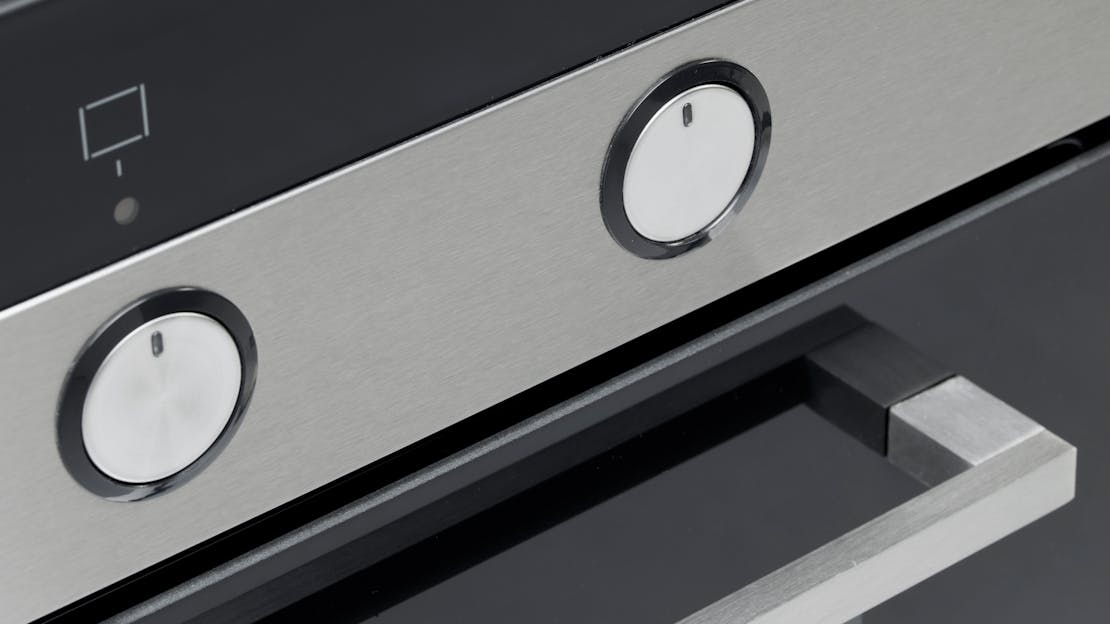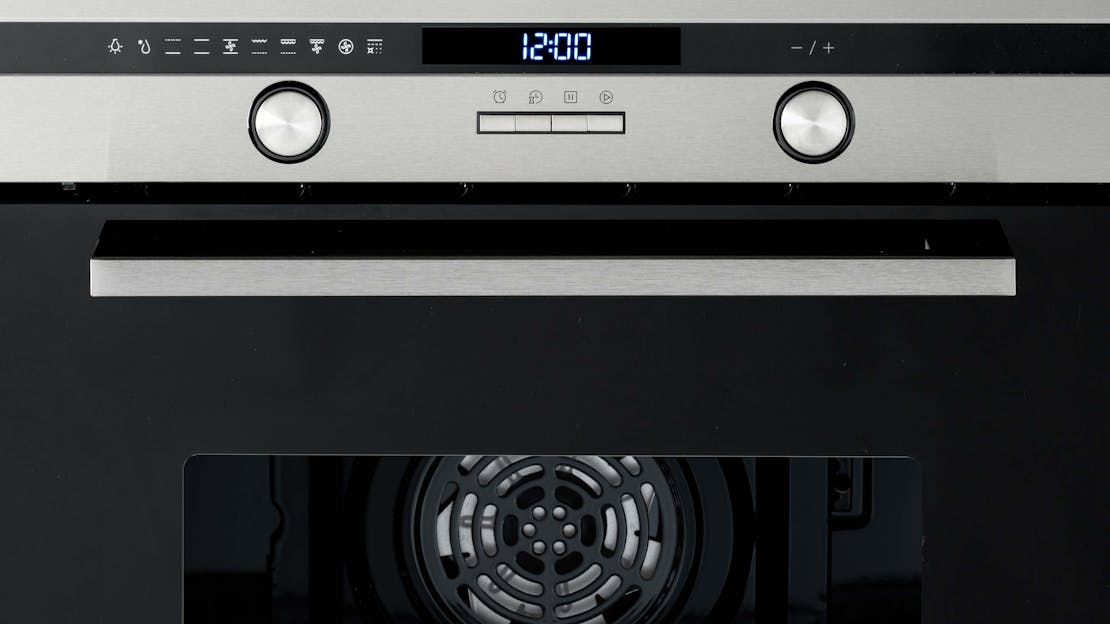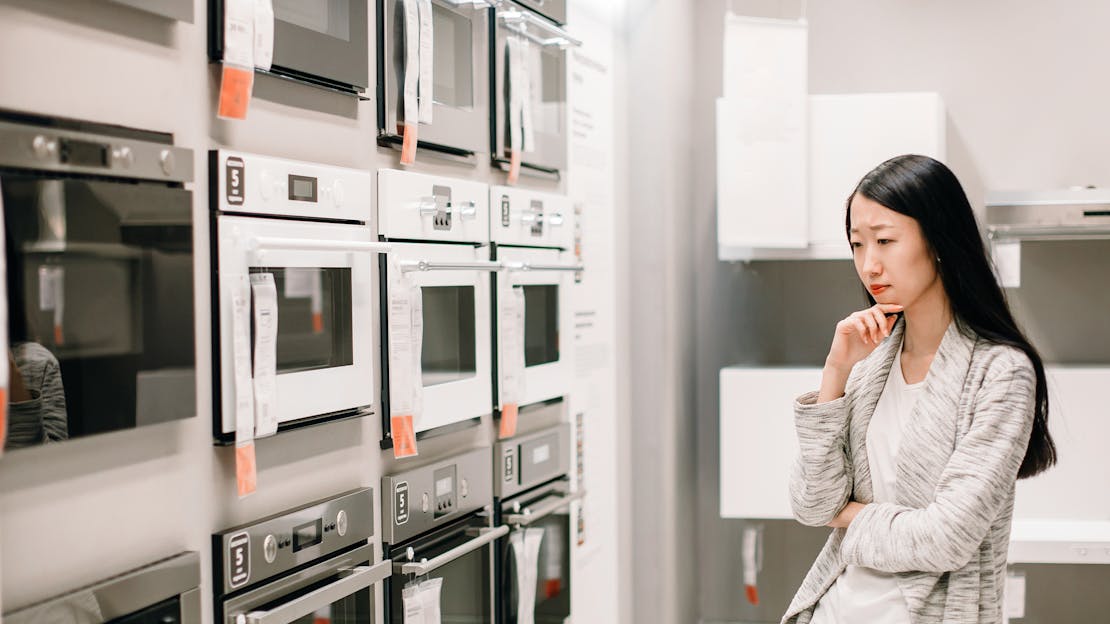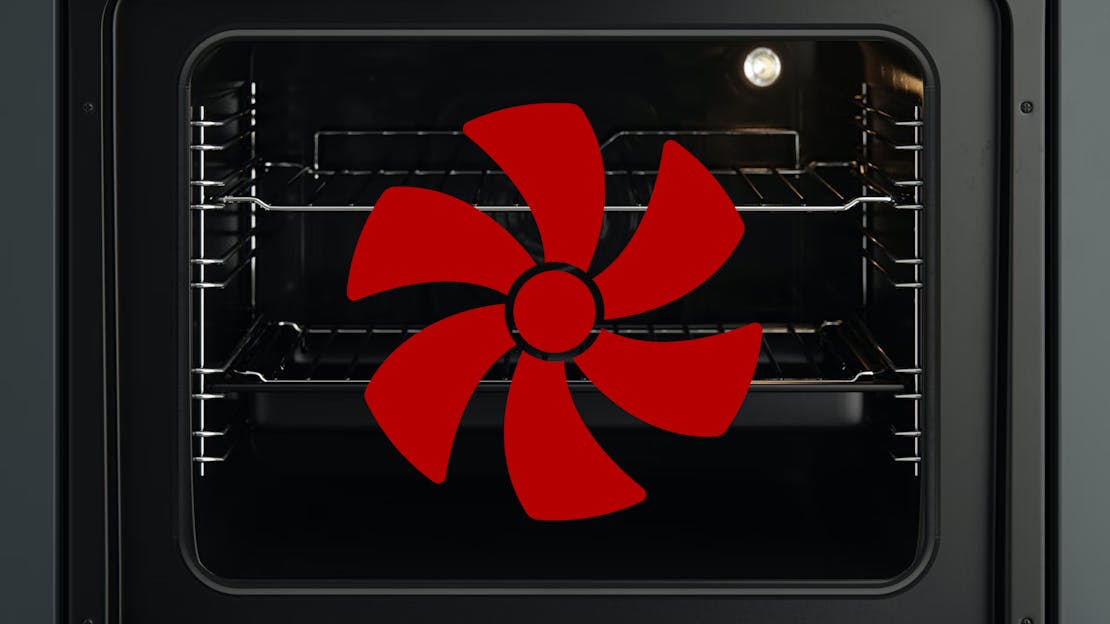
The Ultimate Guide to Fan Ovens
In this guide, we'll cover the technology behind fan ovens, provide practical tips, and share creative information tailored for fan ovens. Whether you're a seasoned chef or a novice cook, we'll help you unlock the full potential of fan ovens,
What is a fan oven?
A fan oven, also known as a convection oven, is a kitchen appliance that employs a fan and exhaust system to circulate hot air evenly throughout the oven cavity. This even heat distribution ensures consistent cooking, prevents hot spots, and allows for faster and more efficient cooking. Fan ovens often operate at slightly lower temperatures than conventional ovens while achieving the same results, making them energy-efficient and excellent for achieving crispy and golden-brown textures in dishes such as roasts, pastries, and pizzas.
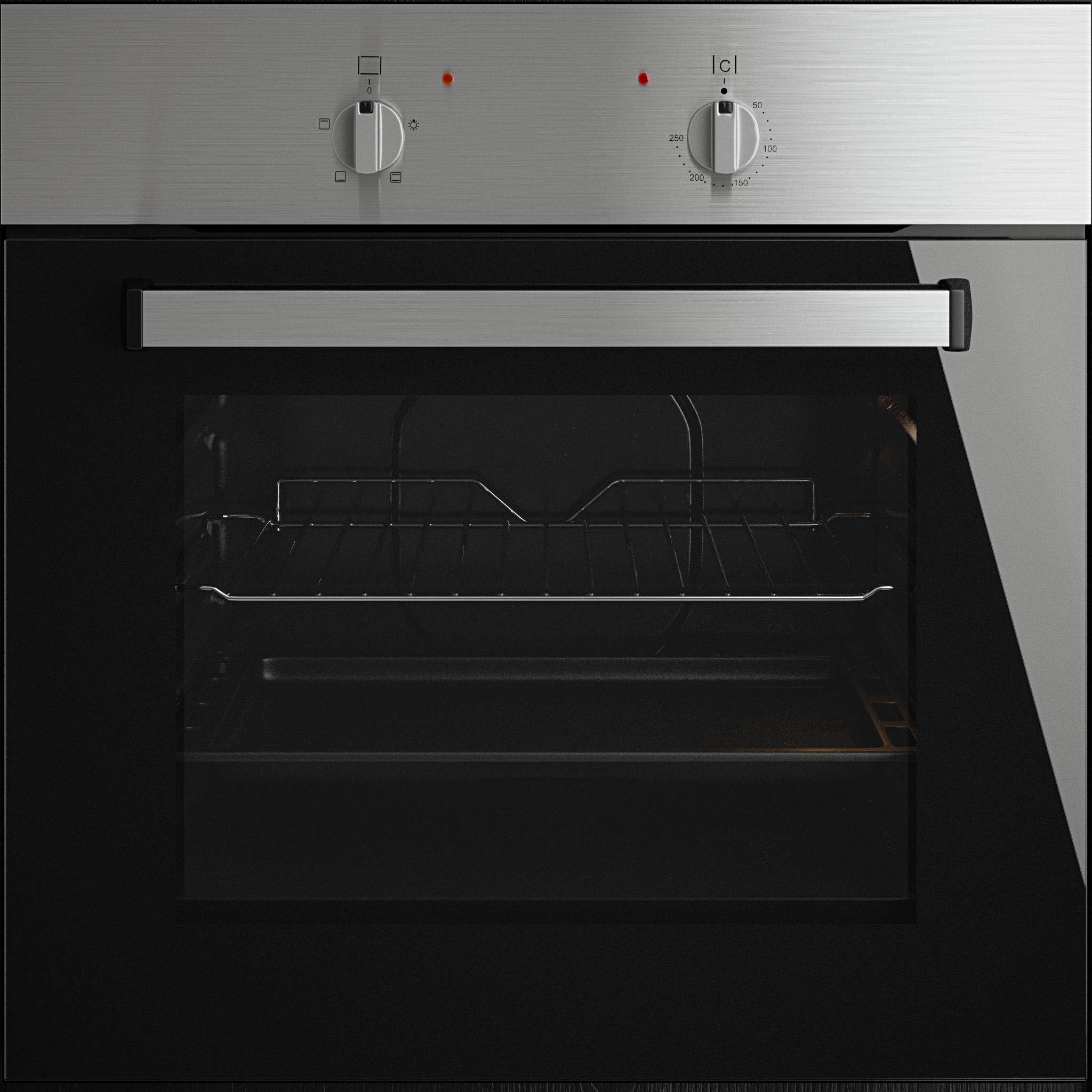
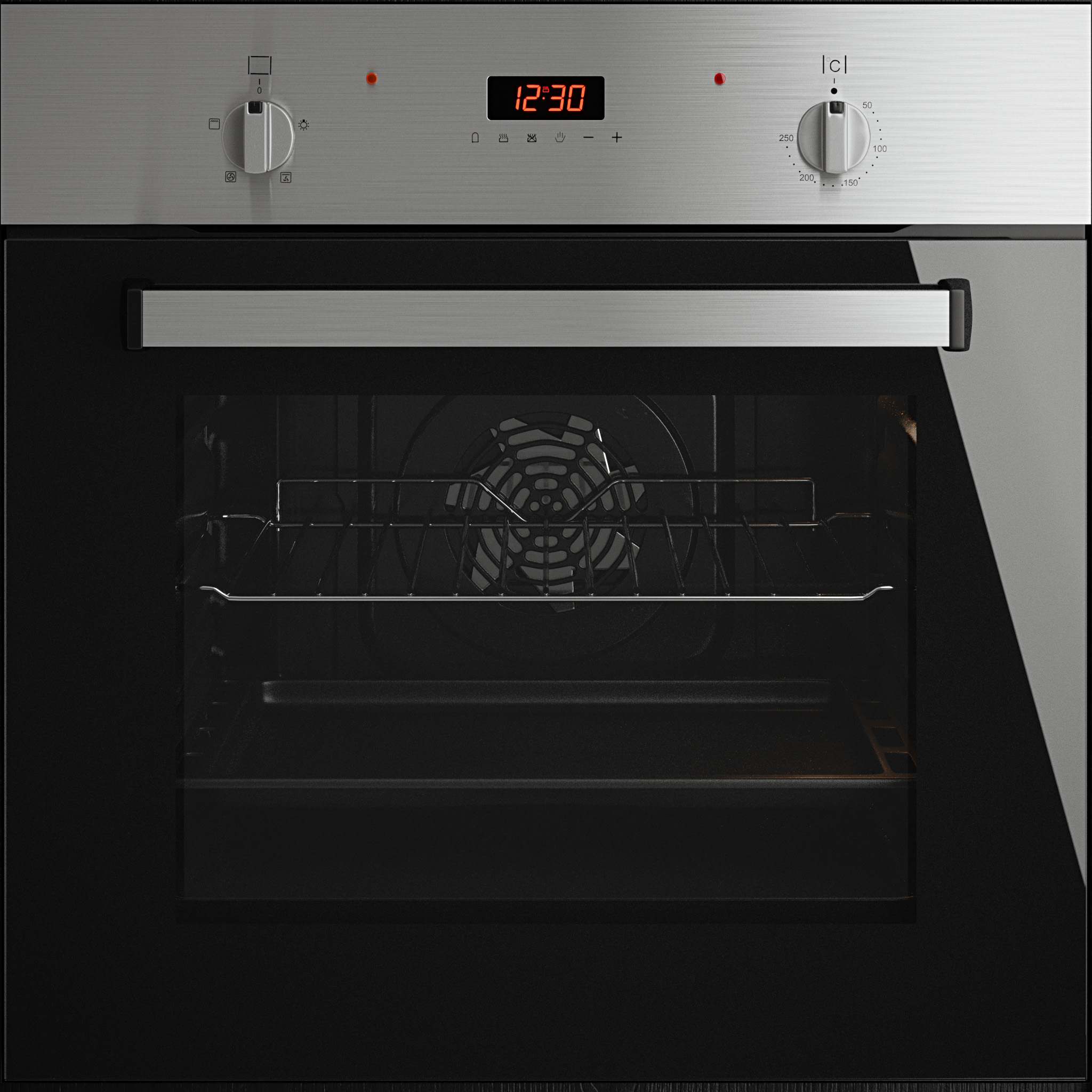
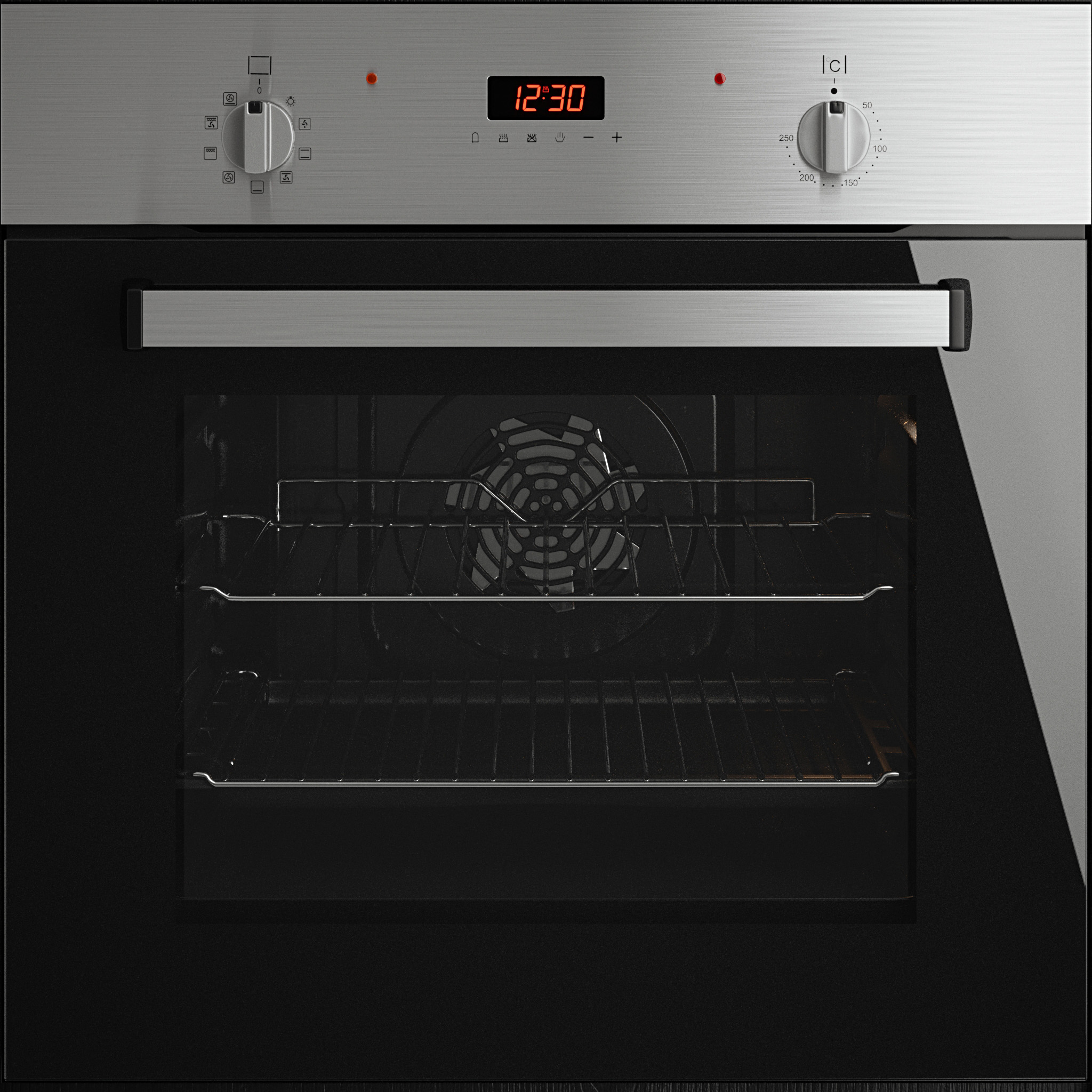
Should I buy a fan oven?
When considering whether to purchase a fan oven, several factors should be taken into account, including your cooking needs, preferences, and budget. Fan ovens offer distinct advantages that can enhance your culinary experience.
One important consideration is your cooking style. Fan ovens are renowned for their versatility, making them suitable for a wide range of culinary tasks. Whether you enjoy baking delicate pastries, roasting meats to perfection, or achieving consistent results in your cooking, a fan oven can be a valuable addition to your kitchen arsenal.
Another key benefit of fan ovens is their ability to ensure even cooking. Thanks to the efficient circulation of hot air, they significantly reduce the risk of unevenly cooked dishes, eliminating hot spots and undercooked areas. This precision in cooking can be particularly valuable for those who seek consistently high-quality results in their dishes.
Fan ovens are also known for their shorter cooking times. The efficient distribution of heat means that they can cook food more quickly than conventional ovens. If you appreciate saving time in the kitchen, a fan oven can be a practical choice.
Furthermore, fan ovens often allow you to achieve the same results as conventional ovens while using slightly lower temperatures. This can result in energy savings over time, making them a more environmentally friendly option.
Considering your budget is essential when deciding on a fan oven. These ovens come in various price ranges, so it's crucial to select one that fits within your financial constraints while still meeting your cooking needs.
Ensure that you have enough space in your kitchen to accommodate a fan oven before making a purchase. Measuring the available area will help ensure that the oven fits properly and integrates seamlessly into your kitchen layout.
Your cooking preferences and the types of dishes you frequently prepare should also influence your decision. If you often cook foods that benefit from even heating and browning, a fan oven may be an excellent investment for your culinary pursuits.
Lastly, research different brands and models of fan ovens, read reviews, and compare features to find one that aligns with your specific requirements and has a good reputation for reliability. Making an informed choice will help you select the right fan oven for your culinary adventures.
What are the benefits of fan ovens
Fan ovens offer a range of advantages in the kitchen. They excel at ensuring even cooking, thanks to the fan that circulates hot air throughout the oven, resulting in consistent browning and cooking for your dishes. Beyond this, fan ovens tend to cook food more quickly than conventional ovens due to their efficient heat distribution, which can save you time in the kitchen and may even reduce energy consumption. Their versatility is another plus, as they are suitable for baking, roasting, grilling, and other cooking methods, making them a versatile addition to any kitchen.
We have a wide range of ovens available with free & fast delivery when you buy online today at MyAppliances. Don’t miss out!
Do fan ovens cook evenly?
Yes, fan ovens are designed to cook food evenly. The fan inside the oven circulates hot air throughout the cooking chamber, ensuring that the heat is distributed evenly around the food. This even distribution of heat helps prevent hot spots and cold spots within the oven, resulting in consistent cooking and browning of your dishes. It's important to note that the even cooking is one of the key advantages of fan ovens and is why they are preferred for tasks like baking where uniformity in cooking is crucial. However, it's still essential to follow recommended cooking times and temperatures in recipes to achieve the best results.
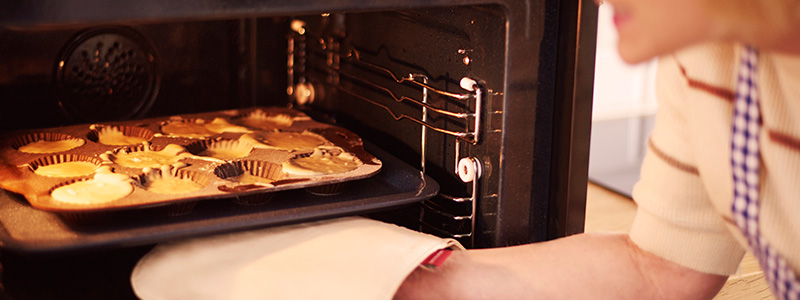
Are fan ovens faster at cooking?
Yes, fan ovens are typically faster at cooking compared to conventional ovens. The reason for this increased speed is the efficient heat distribution facilitated by the fan. Here's how it works:
Even Heat Circulation: In a fan oven, the fan continuously circulates hot air throughout the cooking chamber. This ensures that the heat is distributed evenly around the food.
Faster Heat Transfer: The even distribution of heat means that food is exposed to consistent temperatures from all sides. As a result, heat is transferred more rapidly to the food, leading to quicker cooking times.
Reduced Preheating: Many fan ovens allow you to reduce preheating times since the fan quickly spreads the hot air, bringing the oven to the desired temperature faster.
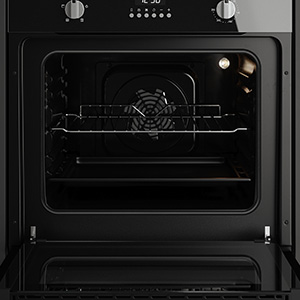
While fan ovens can speed up the cooking process, it's essential to follow cooking times and temperatures recommended in recipes to avoid overcooking or undercooking your dishes. Additionally, the faster cooking times may require some adjustment when transitioning from a conventional oven to a fan oven, so it's a good idea to monitor your cooking until you become accustomed to the oven's performance.
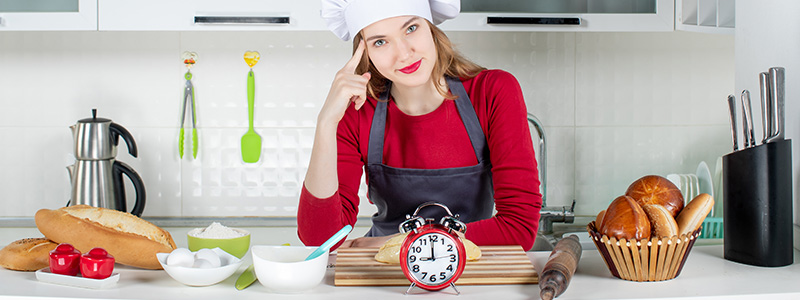
Which is better and what is the difference between fan and fan-assisted?
Before we proceed further, it's worth addressing a potential source of confusion – the difference between a fan oven and a fan-assisted oven. In a true fan oven, the heating element surrounds the fan, ensuring a continuous circulation of hot air throughout the cooking area. In contrast, in a fan-assisted oven, the heating elements remain at the top and bottom of the oven, akin to a traditional oven, with the fan simply aiding in distributing air evenly inside the oven.
How much electricity does a fan oven typically use?
The amount of electricity consumed by a fan oven can vary depending on several factors, including the oven's size, efficiency, temperature settings, and cooking duration. However, I can provide some general estimates to give you an idea:
Wattage: Fan ovens typically have a power rating (wattage) in the range of 2,000 to 3,500 watts, with some larger or commercial ovens having even higher wattages. The higher the wattage, the more electricity the oven consumes when in use.
Cooking Time: The longer you use the oven, the more electricity it will consume. Baking or roasting for extended periods will use more electricity than shorter cooking times.
Temperature: Cooking at higher temperatures consumes more electricity than cooking at lower temperatures. Preheating the oven to a high temperature before cooking can also impact energy usage.
Efficiency: Modern, energy-efficient ovens are designed to use electricity more efficiently than older models. Upgrading to a newer, more energy-efficient oven can result in energy savings.
Cooking Frequency: How often you use the oven and the types of dishes you prepare will also affect your overall electricity consumption.
To get a precise estimate of how much electricity your specific fan oven uses, you can check the manufacturer's specifications for the oven's wattage and refer to your electricity bill to determine the rate you're charged per kilowatt-hour (kWh). Then, you can calculate the energy consumption based on the wattage and cooking time.
It's worth noting that household appliances like ovens typically contribute a relatively small portion to your total electricity usage compared to devices like refrigerators, air conditioners, or water heaters. If you're concerned about energy consumption, you can also explore cooking methods that reduce the need for oven use, such as using a microwave or slow cooker for certain dishes.

How long does a fan oven take to preheat?
For consistent and safe cooking, it's essential to preheat the oven to the required temperature before placing your food inside. This ensures that not only the heating elements are properly warmed (a quick process), but also that the entire oven interior reaches the desired temperature. A fan significantly expedites this process by swiftly moving air away from the heating elements, facilitating rapid heat distribution. Most ovens will signal when they've reached the set temperature, often through a front panel indicator light. If not, it's advisable to use an oven thermometer. Typically, this preheating step takes around five minutes, although the exact duration may vary depending on your oven's size.
How long does a fan oven take to cool down?
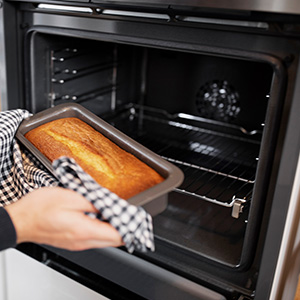
The time it takes for a fan oven to cool down can vary depending on factors such as the oven's size and the temperature it was heated to. For a moderate cooling process from temperatures around 180°C, it typically takes approximately 30 minutes to an hour for the oven to reach a safe, touchable temperature, while for higher temperatures of 220°C or above, the cooling period can extend to 1 to 2 hours or more. Opening the oven door can expedite the cooling process, but care should be taken to avoid burns, and ensuring good ventilation in the kitchen can also help speed up cooling. Always prioritise safety when working near an oven that has been recently in use.
What is a multifunction oven and how are they different to fan ovens?
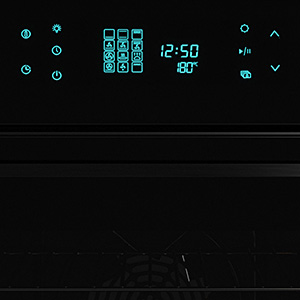
A multifunction oven is an appliance that provides a range of cooking functions and modes, offering versatility in the kitchen beyond basic baking and roasting. These ovens enable you to perform various cooking techniques, such as grilling, conventional, and fan cooking, while also allowing for precise temperature control. They are particularly suitable for handling complex recipes and diverse cooking needs, offering flexibility and adaptability to different culinary tasks. On the other hand, a fan oven primarily utilises a fan for even heat distribution and faster cooking, but typically offers fewer cooking functions and less versatility compared to multifunction ovens. The choice between the two depends on your cooking preferences and the range of tasks you require your oven to undertake.
How to know if you have a fan oven
Identifying whether your oven is equipped with a fan is quite straightforward. When you switch it on, a distinct whirring sound should come from within, readily indicating the presence of the fan. However, you don't even need to power up the oven to ascertain its fan status; there should be a small, informative symbol on the exterior. Look for a three-pronged fan icon if it's fan-assisted, or a three-pronged fan encircled by a circle if it's a full-fledged fan oven.
| Feature | Fan Oven | Conventional Oven |
|---|---|---|
| Heating Element | Fan ovens have an additional fan and a circular heating element around it. | Conventional ovens typically have a single heating element at the top or bottom, but not both. |
| Temperature Distribution | Fan ovens circulate hot air evenly throughout the oven cavity, providing consistent and even cooking. | Conventional ovens may have uneven temperature distribution, leading to hot spots. |
| Cooking Times | Fan ovens often cook food more quickly due to the efficient heat distribution. | Conventional ovens may require longer cooking times for similar recipes. |
| Baking Results | Fan ovens are excellent for baking as they ensure even browning and rise. | Conventional ovens may result in uneven browning and less consistent rise in baked goods. |
| Noise | Fan ovens can be noisier due to the fan motor running. | Conventional ovens are usually quieter since they lack a fan. |
| Cooking Versatility | Fan ovens are versatile and suitable for various cooking methods, including baking, roasting, and grilling. | Conventional ovens are limited in their versatility and may be better suited for specific tasks. |
| Oven Symbols | Look for symbols on the oven control panel, such as a fan icon, which indicates a fan oven. | Conventional ovens may have different symbols or lack the fan icon. |
Top Selling Single Electric Ovens from MyAppliances
Upgrade your kitchen with our range of ovens, including fan, multifunction, and self-cleaning options. From even heat distribution in fan ovens to versatile cooking modes in multifunction ovens and hassle-free maintenance with self cleaning ovens, we have everything to suit your cooking needs. Experience convenience and innovation in your kitchen with our oven solutions.
Oven Buying Guides - Helping you choose the right oven
Oven Buying Guides - Helping you choose the right oven
At the core of every home lies the kitchen, with the oven taking centre stage. This essential appliance is relied upon and used daily, underscoring the significance of selecting the right one. The multitude of options in terms of style, size, and functions can be daunting. To simplify the process, we have created practical guides that will help you determine precisely what to look for. By following these guides, you can confidently choose an oven that caters to your cooking needs and aligns with your lifestyle.
-
Welcome to the comprehensive guide on electric ovens! Whether you're a passionate home cook or someone who simply enjoys preparing delicious meals, this guide is here to provide you with valuable insights into the world of electric ovens.
-
A pyrolytic oven is a self-cleaning appliance that utilises high temperatures to incinerate food residue and grease, eliminating the need for manual scrubbing. During the cleaning cycle, which reaches temperatures as high as 400 to 500 degrees Celsius, the oven locks its door and converts organic matter into ash.
-
If you're after a great value, functional and practical single oven, you've certainly come to the right place. Here at MyAppliances we stock an extensive range.
-
Our double ovens will make light work of all your meals, offering a striking appearance, chunky controls and handy programmers. Want some more information? Simply check out our convenient buyers' guide below for all the details you'll need ahead of purchase.
-
When it comes to buying a new oven, the options can seem overwhelming. With over 20 different types of ovens available, each with unique features and functionalities, it can be difficult to determine which one is right for you.

